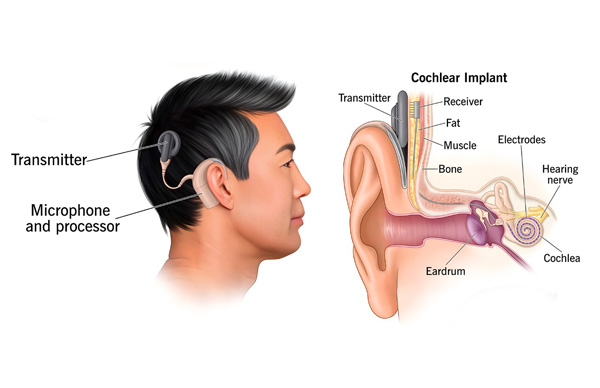High-Risk Pregnancy: Understanding, Identifying, and Managing it safely

Pregnancy is a period of excitement, hope, and new beginnings, but for some mothers, it is also accompanied by an increased risk of medical complications for both mother and child. This is referred to as high-risk pregnancy. Knowing what this terminology is all about, learning to identify its warning signs, and learning how to take care of it safely can really make a huge difference in outcomes.
What Constitutes a High-Risk Pregnancy?
A high-risk pregnancy is the condition in which the mother, the unborn baby, or both have a higher-than-normal chance of having problems during or after pregnancy. These risks may be there from the beginning or can arise at any point during the pregnancy.
Common Maternal Risk Factors:
- Pre-existing medical conditions: Diabetes, hypertension, thyroid disease, kidney disease, or autoimmune diseases such as lupus.
- Age risks: Being younger than 20 or older than 35 years raises the risk of some complications.
- Lifestyle factors: Smoking, alcohol use, or drug abuse can injure mother and baby.
- Obesity or mental illness: Excess weight causes gestational diabetes or high blood pressure, while depression and anxiety affect maternal and fetal health.
- History of previous complications: History of prematurity, preeclampsia, miscarriage, or stillbirth.
- Multiple pregnancy: Pregnancy with twins, triplets, or more raises the risks of preeclampsia, preterm labor, and growth restriction in the fetus.
Fetal Risk Factors:
- Congenital anomalies: Structural defects in the heart, organs, or chromosomal disorders such as Down syndrome.
- Fetal growth restriction (FGR): Often associated with poor placental function or maternal illness.
Signs that you should not ignore
No matter whether a pregnancy is considered high-risk from the beginning, there are some signs that must never be overlooked:
- Persistent and severe abdominal pain or contractions that do not subside.
- Visible changes in fetal movement, e.g., decreased activity or no movement.
- Visual impairment, severe headaches, or dizziness early signs of preeclampsia.
- Sudden swelling in hand, face, or leg.
- Profound nausea, constant vomiting, high temperature, chest pain, respiratory distress, or vaginal bleeding.
- Unusual symptoms after delivery, e.g., seizures or persistent headaches, which might suggest postnatal complications such as eclampsia.
Right treatment can prevent an otherwise potentially dangerous condition from becoming more serious.
Complicated Conditions in High-Risk Pregnancies
Preeclampsia / Eclampsia:
Preeclampsia usually seen after the 20th week of gestation and is characterized by increased blood pressure, combined with proteinuria or organ dysfunction in the liver, kidneys, or platelets. When seizures are present, the disease is referred to as eclampsia and is life-threatening if not treated promptly. A more severe form, referred to as HELLP syndrome (Hemolysis, Elevated Liver enzymes, Low Platelets), is accompanied by pain in the upper abdomen, nausea, vomiting, and vision changes.
Other High-Risk Situations:
- Placental abruption: Premature placenta separation from the uterine wall, resulting in fetal distress and maternal hemorrhage.
- Ectopic pregnancy: Embryo implantation outside the uterus, potentially resulting in fatal internal hemorrhage.
- Peripartum cardiomyopathy: An uncommon but serious heart condition that arises during late pregnancy or after delivery, sometimes being confused with normal pregnancy tiredness.
Safe Management Strategies
Intensified Prenatal Monitoring
Regular ultrasounds, non-stress tests, and biophysical profiles assist with monitoring the growth and health of the baby. Blood pressure, urine protein, and blood sugar levels need to be monitored on a regular basis for identifying complications such as preeclampsia or gestational diabetes early on.
Multidisciplinary Care
For complicated cases, a team of professionals who can include maternal-fetal medicine specialists, neonatologists, cardiologists, or genetic counselors may offer specialized care.
Interventions
Treatment can include medication for regulating blood pressure or blood glucose, seizure prevention in preeclampsia, or even preterm delivery in emergency situations. Lifestyle changes like a diet that is nutrient-rich, safe exercise, and rest can also improve outcomes.
Preventive Measures
Preconception counseling is beneficial in controlling chronic conditions prior to pregnancy. Supplementation of folic acid decreases neural tube defects and low-dose aspirin in well-screened high-risk women can decrease the risk of preeclampsia.
Outcome and Long-Term Health
Most high-risk pregnancies turn out to be successful, with the help of timely intervention and appropriate medical attention. Yet, even then, high-risk pregnancies can have an elevated risk of preterm birth, increased demand for NICU care for the infant, and a higher risk of needing a cesarean delivery. Aside from delivery, mothers with high-risk pregnancies can also have a high chance of developing long-term health problems like hypertension, diabetes, or heart conditions in the future. Therefore, postpartum follow-up is as crucial as prenatal care. Emotional well-being should receive equal consideration too, availability of counseling, mental health care, and active participation of relatives can ease stress, facilitate faster recovery, and boost the mother's overall well-being.
How to Handle a High-Risk Pregnancy
Handling a high-risk pregnancy involves ongoing communication with medical professionals, obedience to prescribed tests, and maintaining a healthy lifestyle. Frequent prenatal check-ups enable doctors to keep track of the baby's development and treat any complications early before they grow worse. Healthcare providers can prescribe certain nutritional changes, regulated physical exercise, or medication to ensure optimal health. Home monitoring of blood pressure, blood sugar levels, and other critical parameters when recommended is useful. Stress-reduction activities like prenatal yoga, meditation, or controlled breathing exercises, if deemed suitable by the doctor, can be beneficial for both physical and psychological health. Above all, pregnant women should report new or atypical symptoms promptly. The earlier an issue is detected that may occur, the greater the potential of having a safe delivery and a healthy post-delivery recovery for the mother and child.
Conclusion
A high-risk pregnancy does not equate to complications, but it does call for additional care, caution, and timely medical intervention. Detecting warning signs early, regular check-ups, adherence to prescribed interventions, and creating an environment of care can contribute significantly towards safeguarding maternal and fetal well-being. Knowledge, watchfulness, and proactive planning continue to be the most potent weapons to secure the safety and health of mother and child alike.
Disclaimer
Though all attempts are made to provide correct information on the subject, inadvertent & typographical errors arising out of manual intervention cannot be ruled out. It is requested to bring any such discrepancies to the notice of the blogger for correction.













